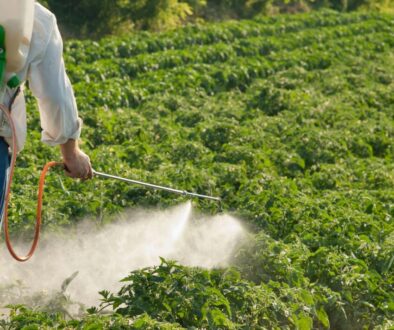New PFAS exposure scoring method could speed research on health effects
Researchers have developed a new statistical tool they say could speed up research on the health effects of exposures to toxic “forever chemicals” that are commonly found in an array of consumer products.
In a study published last week in Environmental Health Perspectives, researchers from the Mount Sinai Medical Center and Johns Hopkins School of Public Health presented a new tool that offers PFAS researchers a way to compare total exposures to PFAS across scientific studies. The tool may provide researchers a more effective method to study these persistent toxins.
PFAS, an acronym for per- and polyfluoroalkyl substances, are a class of thousands of chemicals commonly used in non-stick cookware, food packaging, and waterproof clothing. The chemicals have been linked to certain cancers and reproductive issues.
Studying chemical mixtures is crucial to public health research, since people are exposed to many chemicals—including many types of PFAS—at once in their daily lives. But most studies that focus on toxic chemical mixtures only study those effects in relation to specific health outcomes; for example, a study might determine a chemical’s effect on blood pressure, or heart disease. Additionally, studies might measure different types of PFAS chemicals. That makes it hard for environmental health researchers to compare data.
Researchers proposed a fix to this problem by developing a calculator tool that can estimate total PFAS exposure burden using just a few measurements of PFAS exposure. According to Shelley Liu, lead author on the study and a professor at the Ichan School of Medicine at Mount Sinai Medical Center, the calculator tool is the first of its kind in the environmental health field.
Liu describes studying PFAS exposure burden as an iceberg: The types of PFAS scientists measure are the tip of the iceberg, but more exposure likely lurks below the water. Her team’s tool, created using data from the National Health Nutrition and Examination Survey (NHANES), helps to estimate the total exposure—the whole iceberg. Scientists can use it to assign total exposure “scores” to individuals in environmental health studies, making comparison across studies and analysis of disparate sets of data more feasible, said Liu.
“It’s okay if we don’t measure the full set of PFAS,” said Liu. “We can still use [the calculator tool] to estimate PFAS burden across studies.
To demonstrate the calculator tool, the researchers tested it using the NHANES data on health outcomes, like cholesterol and blood pressure. They found that the exposure burden scores generated by their calculator were more consistent in predicting health outcomes as compared to the conventional approach of using sums of PFAS concentrations.
Liu said the method could also be used for biomonitoring purposes, helping researchers compare PFAS exposure burdens across geographic areas, races, genders, and members of different socioeconomic classes.



